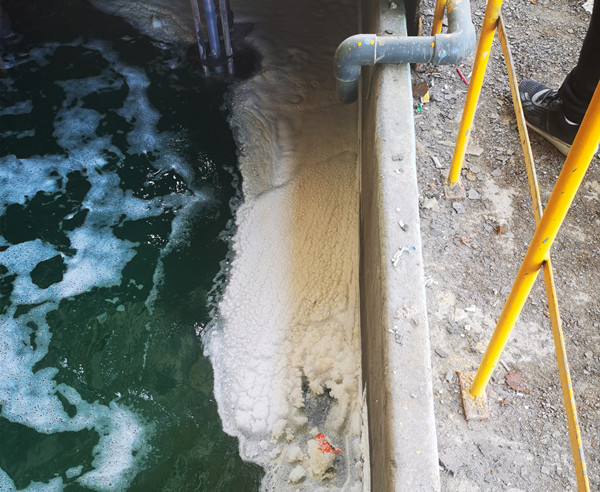The traditional definition of an acid is a compound that, when dissolved in water, has a concentration of hydrogen ions in solution greater than the concentration of hydrogen ions in pure water. The pH of an acidic solution is less than the pH of water. Acids are generally acidic and can undergo neutralisation reactions with bases to produce water and salt.
Acids can be divided into inorganic acids and organic acids. Bases are the opposite of acids. Bases are mostly hydroxides of alkali metals and alkaline earth metals, usually bitter tasting substances whose solutions can change the colour of a particular indicator.

A company uses our radar level meter to measure acid and alkali solutions, model RD-901. The customer responded that the radar level meter often showed jumping and error code E14, and sought our help.
Our after-sales engineers arrived at the site and after inspection, analyzed that the jumping and error code E14 was due to the fact that the incoming liquid in the tank at the site would generate foam and interference, which led to no signal from the radar level meter and only then did the jumping and fluctuating problem occur.
The after-sales engineer gave a solution by adding a waveguide pipe to the bottom of the tank to avoid the interference of the foam, or adding a floating ball with the waveguide radar to enhance the radar signal. After changes and commissioning, the above problems were properly solved and the radar level meter was stable and accurate.
The radar level meter used in this case is one of our high-frequency radar level meters, this series of products is non-contact radar, with no wear, and tear, and no pollution.
The small size of the antenna makes it easy to install. The wavelength is short and has a good reflection on inclined solid surfaces. Small measurement blind spots, and good results even for small tanks. Virtually unaffected by corrosion, slight foaming, virtually unaffected by water vapor, temperature, and pressure changes in the atmosphere, and heavily dusty environments do not affect electromagnetic wave operation.
The high signal-to-noise ratio for better performance even in fluctuating conditions Excellent wave speed aggregation, with a wide range of antenna types to meet a wide range of operating conditions.

It is not only acid and alkali solutions that foam when measured, but many kinds of media can produce it, others can produce water vapor, and so on. The solution is different even if the problem is the same for different working conditions.
If we encounter a problem in measurement that we cannot solve, we need to seek help from professionals who can help us solve the problem through their professional knowledge and experience.
